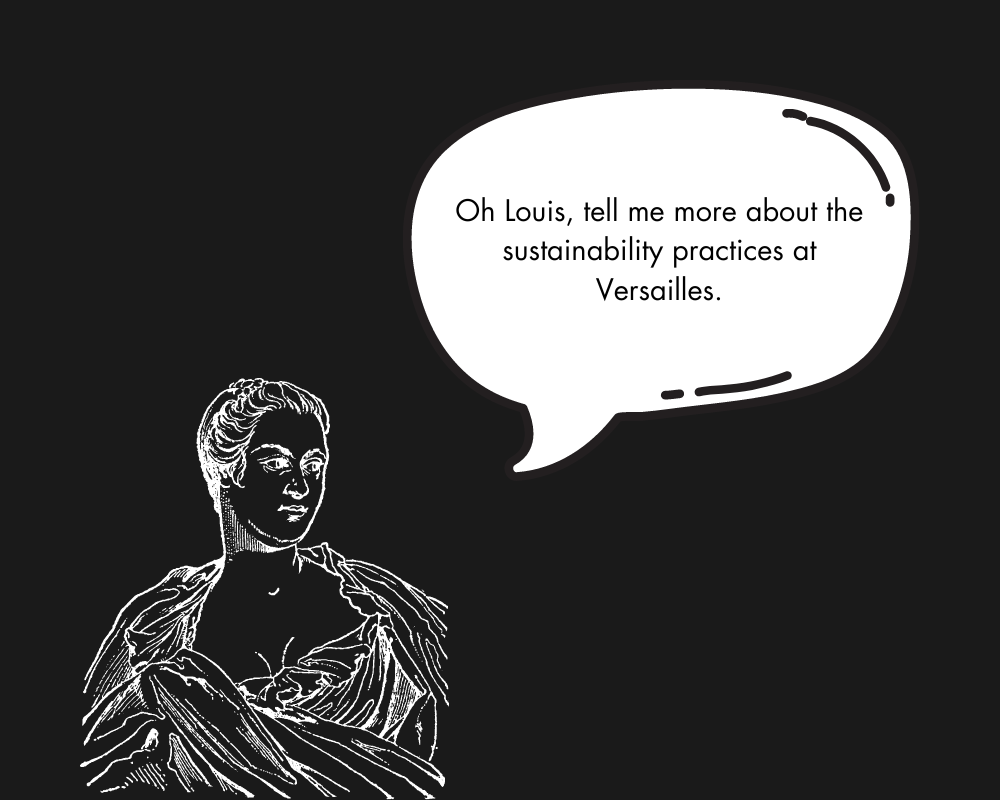“Every day, I wish to please, but this is not enough. One must aim to charm.” - Madame de Pompadour
Success is not won through obvious gestures or superficial tactics.
It is an art of persuasion, a game of influence, where one must penetrate the hidden desires, insecurities, and aspirations of their audience.
Like the courtier navigating the treacherous waters of royal favor, a marketer must move with subtlety and precision. In a marketplace saturated with noise, the one-size-fits-all approach is not merely ineffective - it is fatal.
To truly captivate your audience, you must master the art of personalization, authenticity, and nuance.
Consider the timeless lesson of influence exemplified by one of history’s greatest tacticians: Madame de Pompadour.
The Tale of Madame de Pompadour: Master of Tailored Influence
Madame de Pompadour, born Jeanne Antoinette Poisson, did not rise to prominence in the court of King Louis XV through conventional means.
She did not rely on her beauty alone, nor on overt displays of flattery that would have earned her nothing but fleeting attention.
Pompadour understood a fundamental truth about power: those in positions of authority are often more vulnerable than they appear.
Louis XV, despite his status, was plagued by boredom and insecurity, craving stimulation that went beyond the mundane routines of power and politics.
Pompadour recognized that to remain indispensable, she had to appeal to more than the king’s surface-level desires. While others showered him with praise for his military victories or governance, Pompadour took a more refined approach, addressing his deeper, unspoken needs.
She offered intellectual companionship, curated art and culture that intrigued him, and created an atmosphere that stirred his mind and emotions. She positioned herself as not just another mistress, but as a trusted confidante who could anticipate and fulfill the king’s hidden cravings for refinement and emotional connection.
Through this tailored approach, Pompadour maintained her influence for nearly two decades, long after their romantic relationship cooled. She understood that true power comes from recognizing and catering to the underlying motivations of those you seek to influence - not through direct appeals, but by aligning herself with the king’s emotional and intellectual needs in ways others could not.
Marketing Lesson: Know Your Audience’s Deeper Desires
Madame de Pompadour’s mastery of influence is a model for modern marketers.
She did not appeal to the king’s power or ego in generic ways; she crafted a strategy based on his unique and often unspoken desires.
In today’s world, understanding the hidden motivations of your audience is just as critical.
Consumers are driven by complex forces - a desire for status, a need for security, altruistic ambitions, or a hunger for recognition and self-improvement.
Brands that can tap into these deeper motivations build messages that resonate on a personal, emotional level. They move beyond the transactional nature of selling a product and instead address the core needs that compel consumers to act.
This requires not only thorough research but also a keen understanding of human psychology.
Whether your audience seeks social validation, a sense of belonging, or to make an impact on the world, your messaging must be designed to speak directly to these desires.
By following the example of Madame de Pompadour - tailoring your approach to the deepest needs of your audience - you can build a lasting and meaningful connection that goes far beyond the superficial.
True influence is not given; it is earned through insight, subtlety, and the art of persuasion.
The Four Strongest Motivations in Marketing
At the heart of all human behavior lies a set of powerful, universal motivations that drive decisions and shape desires.
To influence others - whether as a courtier or as a marketer - one must learn to appeal to these core motives, understanding that they transcend time and culture. In marketing, as in the subtle power games of old, knowing what truly moves people allows you to craft messages that go beyond surface-level persuasion.
The four strongest motivations - Status, Altruism, Self-Improvement, and Peer Recognition - are the keys to unlocking loyalty, passion, and engagement.
1. Status: The Quest for Elevation
Since the dawn of civilization, humans have sought to elevate themselves above others, to stand apart and signal their success.
Status is a primal force, and those who can offer the illusion or reality of exclusivity wield great power.
Brands that understand this create products and images that serve as symbols of success and prestige, positioning their offerings not as mere objects, but as gateways to a higher social standing.
Power of Catering to Status: When a consumer feels that ownership of a product sets them apart from the masses, it creates a deep emotional connection. They are no longer buying a product - they are buying a symbol of their own success. Brands that achieve this evoke pride of ownership and cultivate fierce loyalty.
Example: Rolex has perfected the art of appealing to status. Wearing a Rolex is not just about telling time; it is about telling the world you’ve arrived. Through its craftsmanship, exclusivity, and association with high-profile figures, Rolex has become a symbol of achievement and wealth, transcending the function of the watch itself.
2. Altruism: The Desire to Do Good
Altruism taps into the human need to feel connected to something greater than oneself.
Whether it’s contributing to social causes, protecting the environment, or supporting those in need, the desire to do good is a powerful motivator.
Brands that align themselves with altruistic values can build deeper emotional connections with consumers who are eager to feel that their purchases make a difference.
Power of Catering to Altruism: By appealing to consumers’ desire to contribute to a larger cause, brands can create long-term loyalty. Consumers no longer feel they are simply buying a product; they feel they are part of a movement, a force for good in the world.
Example: TOMS Shoes is the quintessential brand for tapping into altruism. Their “One for One” model - where a pair of shoes is donated for every purchase - appeals directly to consumers’ desire to help those in need. Every purchase becomes an act of charity, making the consumer feel that they are part of something meaningful.
3. Self-Improvement: The Journey to Becoming Better
Humans are innately driven by the desire for growth, to improve themselves and reach their full potential.
Whether through mastering a skill, enhancing their health, or achieving personal goals, self-improvement is a fundamental motivation that can be leveraged by brands offering transformation or personal mastery.
Power of Catering to Self-Improvement: When a brand positions itself as a partner in a consumer’s journey to better themselves, it becomes more than just a product provider. It becomes a trusted ally in personal development, deepening the emotional connection and fostering loyalty.
Example: Peloton has brilliantly tapped into this desire for self-improvement. By offering more than just exercise equipment, Peloton positions itself as a tool for continuous self-betterment. With interactive workouts, community-driven challenges, and personalized metrics, Peloton turns fitness into an ongoing journey of transformation.
4. Peer Recognition: The Need for Validation
The desire for peer recognition is deeply embedded in human nature.
We seek validation from those around us, longing for admiration and approval.
Brands that provide ways for consumers to express their identity and gain recognition within their social circles tap into this fundamental social motivation.
Power of Catering to Peer Recognition: By giving consumers a platform or product that allows them to stand out and receive admiration, brands create a powerful social feedback loop. Consumers will not only buy the product but will also become evangelists, sharing their experiences in ways that reflect positively on themselves and the brand.
Example: Instagram has built its entire platform around the desire for peer recognition. By allowing users to share their lives and experiences, Instagram taps into the need for validation through likes, comments, and followers. Brands that market through Instagram harness this motivation, enabling users to display their purchases and lifestyle in ways that garner social approval.
Tesla: A Masterclass in Catering to All Four Motivations
No modern brand has so successfully catered to the four core motivations - Status, Altruism, Self-Improvement, and Peer Recognition - as Tesla.
By appealing to each of these drivers, Tesla has built a fiercely loyal customer base that feels connected to the brand on multiple emotional levels.
- Status: Owning a Tesla signals wealth, cutting-edge technology, and innovation. It’s not just a car; it’s a symbol of success and forward-thinking, making Tesla a must-have for those seeking to elevate their social standing.
- Altruism: Tesla’s mission to accelerate the world’s transition to sustainable energy appeals directly to altruistic consumers. Buyers feel they are contributing to a greener planet, reducing their carbon footprint, and supporting a company that is making a positive environmental impact.
- Self-Improvement: Tesla continuously positions itself as a tool for self-improvement. With autonomous driving, over-the-air updates, and cutting-edge technology, owning a Tesla makes consumers feel they are part of the future of transportation, constantly improving their convenience and lifestyle.
- Peer Recognition: Driving a Tesla earns instant recognition in social circles. Tesla’s association with innovation and luxury makes it a status symbol that consumers proudly share. Social media amplifies this, as Tesla owners frequently showcase their cars online, furthering the cycle of validation.
Tesla has transcended the typical relationship between consumer and product. It has forged a deeper, emotional bond, ensuring loyalty that goes beyond logic. It is this multifaceted appeal that has driven Tesla’s rapid rise and cult-like following in the marketplace.
4 More Lessons We Can Learn from the Madame:
Lesson 1: The Dangers of Being Too Direct
The direct approach is often the most perilous.
History is littered with the failures of those who believed they could win favor through overt displays or crude flattery.
Like the courtier who showers a ruler with excessive praise, hoping to gain a quick advantage, brands that rely on heavy-handed messaging expose themselves to the most dangerous response: rejection.
Madame de Pompadour, with her keen understanding of human nature, knew this well. She built her power by avoiding the obvious and embracing subtlety.
As Pompadour’s strategy illustrates, overt flattery - however well-intentioned - can be disastrous.
It signals desperation, and desperation is never attractive to those in positions of power.
In the court of public opinion, as in the court of Louis XV, direct, heavy-handed tactics are seen for what they are: manipulation.
And nothing causes a quicker backlash than the sense that one is being manipulated.
In marketing, this principle is just as crucial.
Consumers today are highly perceptive, often more so than brands give them credit for.
They can smell insincerity from a distance, and when a message feels forced, opportunistic, or too promotional, they disengage- or worse, they retaliate.
Like courtiers vying for influence, brands must master the art of subtlety, weaving their values and messages into narratives that align with their audience’s deeper desires.
A Modern Cautionary Tale: Pepsi’s "Live for Now" Ad
In 2017, Pepsi provided a modern-day example of the dangers of being too direct.
The now-infamous "Live for Now" ad, featuring Kendall Jenner, attempted to directly tie the brand to a burgeoning social justice movement.
The idea was simple, yet deeply flawed: the ad implied that a can of Pepsi could unite people during moments of political protest and strife.
The public saw through the attempt immediately.
Consumers felt the brand was appropriating a serious issue for commercial gain, and the backlash was swift and unforgiving.
This misstep is a stark reminder of how easily a brand can miscalculate when it assumes it can directly align itself with a cause without earning the right to do so.
When the message feels inauthentic or opportunistic, the audience will not just reject it; they will turn against it.
Pepsi’s failure serves as a lesson for all brands: force-fed messages, no matter how noble the intent, will backfire when the public senses insincerity.
The Power of Subtlety
Successful brands, like skilled courtiers, know that power is most effectively wielded when it is not flaunted.
Rather than making obvious, boastful claims about a product’s superiority, they focus on the values it upholds, the lifestyle it represents, or the impact it has on the community.
By allowing the message to emerge organically through storytelling, rather than hammering it home with direct appeals, brands can win loyalty without alienating their audience.
The lesson is clear: subtlety is strength, and in the game of influence, the less direct approach often proves far more powerful.
Lesson 2: The Power of Indirect Flattery
In the subtle art of influence, direct praise can be dangerous, for it risks appearing obvious and insincere.
A ruler like Louis XV, surrounded by sycophants, quickly grows tired of overt flattery.
Yet Madame de Pompadour, ever the master strategist, understood the power of indirect flattery.
She focused on qualities that others overlooked, making the king feel uniquely understood and admired in ways no one else could. By subtly validating his deeper, unspoken needs, she secured her position for years.
This same approach holds immense power in the modern battlefield of marketing.
Just as Pompadour honed in on aspects of Louis XV’s character that other courtiers ignored, brands today can win loyalty by addressing the unseen or unspoken desires of their consumers. Indirect flattery doesn’t involve praising a product's obvious traits - instead, it acknowledges the aspirations and identities of the audience.
A brand might offer more than just a product; it offers a vision, a gateway to a lifestyle that the consumer desires.
By aligning with values like sustainability, exclusivity, or self-expression, marketers can create campaigns that speak to their audience’s deeper sense of self.
This is the essence of indirect flattery - it doesn’t merely tell the consumer how great the product is; it allows them to see themselves in the story, to feel their talents, aspirations, or beliefs are being celebrated.
Apple’s “Shot on iPhone” Campaign: A Case in Point
Few brands understand the art of indirect flattery like Apple.
Their “Shot on iPhone” campaign is a brilliant modern example.
Rather than bombarding their audience with technical specifications and boasting about the phone’s camera quality, Apple took a different route.
They focused on showcasing stunning photos and videos, all captured by everyday users of the iPhone. In doing so, they subtly conveyed the camera’s capabilities without ever explicitly stating them.
The genius of this campaign lies in the message it sends: You, the consumer, have the ability to create professional-quality images.
The iPhone is merely the tool that enables your creativity to flourish. Apple shifts the spotlight from their product to the consumer’s talent, flattering the user’s skills indirectly and, in the process, elevating the brand.
Flatter Your Consumer’s Identity
Apple’s campaign teaches a vital lesson about influence.
By celebrating the talent and creativity of its users, the brand created an emotional connection that goes far beyond product features.
This is the key to indirect flattery - rather than focusing solely on the product itself, the brand taps into the consumer’s identity, offering validation and empowerment.
Just as Pompadour maintained her influence by recognizing what others didn’t, marketers can cultivate loyalty by appealing to their audience’s deeper desires and self-perception.
To influence is to flatter indirectly - making the consumer feel seen, understood, and appreciated for who they are, not just for what they might buy.
Lesson 3: Mirroring Values for Stronger Connections
Even the courtiers lesser to Madame de Pompadour knew well the value of mirroring their ruler’s beliefs and ideals.
To gain favor and secure influence, they would align themselves with the values of their sovereign, presenting themselves as loyal extensions of the ruler's own worldview.
This principle of mirroring, so vital to the courtier’s survival, remains just as powerful in the modern world of marketing. The most successful brands are those that mirror the values of their audience, creating a resonance that goes far deeper than a mere transaction.
Just as courtiers mirrored the values of their rulers to gain influence, brands today must align themselves with the values of their consumers to foster loyalty.
In a world where consumers are no longer content with superficial marketing, they seek out brands that share their beliefs and stand for the causes they care about.
Whether the focus is social justice, environmental responsibility, or personal empowerment, a brand’s ability to authentically reflect the values of its audience creates an emotional bond that transcends the product itself.
This is where segmentation and personalization become essential.
Just as each ruler had unique ideals and insecurities, modern consumer segments are driven by diverse motivations.
Some seek exclusivity, others prioritize ethical consumption, and many are focused on self-improvement.
To form a deeper connection, a brand must speak to these motivations, tailoring its messaging to resonate with the specific values of each segment.
When a brand mirrors its audience’s values, it creates a sense of shared identity, turning consumers into loyal advocates.
Patagonia: A Master of Mirroring Environmental Values
A prime example of this strategy in action is Patagonia, the outdoor apparel company that has become synonymous with environmental activism.
Patagonia has aligned itself so closely with the values of eco-conscious consumers that the brand and its cause are indistinguishable.
From pledging a percentage of sales to environmental causes to launching bold campaigns like “Don’t Buy This Jacket” - urging customers to reduce wasteful consumption - Patagonia has consistently mirrored the values of sustainability and environmental responsibility.
In 2022, Patagonia’s commitment to these values reached new heights when the company’s ownership was transferred to a trust focused on fighting climate change.
This move was not just a marketing ploy but a powerful reinforcement of the brand’s core mission, one that resonated deeply with its audience.
Patagonia’s actions reflect the values of their customers, making the brand more than just a purveyor of products - it becomes a partner in their quest for a sustainable future.
Align Values to Forge Emotional Bonds
The case of Patagonia illustrates a vital lesson: when a brand mirrors the values of its audience, it fosters an emotional connection that goes beyond the product.
Patagonia’s alignment with environmental activism has cultivated a loyal base of consumers who don’t just buy the brand’s products - they believe in its mission.
This sense of shared values strengthens trust, deepens loyalty, and transforms the consumer-brand relationship into something meaningful and lasting.
Like the courtier who mirrored the ideals of their ruler to secure favor, brands today must reflect the beliefs of their audience. By doing so, they not only capture attention but also build a bond of trust that leads to enduring loyalty.
Lesson 4: Crafting Emotional Appeals
Rational arguments seldom hold the greatest power.
A ruler may make decisions grounded in strategy and logic, but more often than not, it is emotion that steers the course of action.
This truth is as relevant today in the realm of marketing as it was in the courts of power.
Humans are driven by emotions - desires, fears, aspirations - and it is through these emotional currents that true influence is achieved.
Brands that understand this can shape their messaging to tap into deep emotional triggers, creating connections that logic alone could never forge.
The power of emotional appeal in marketing cannot be overstated.
While consumers may tell themselves that their decisions are based on logic - comparing prices, evaluating features - the reality is far more primal.
Emotion is the hidden force driving the initial attraction.
Whether it’s the allure of status, the desire for belonging, or the need to be seen as socially or environmentally responsible, successful brands craft their messaging to speak directly to these underlying emotional triggers.
Just as the skilled courtier would appeal to a ruler’s vanity or need for validation, brands must recognize what drives their audience.
For some, it’s the desire to project prestige and exclusivity.
For others, it’s the need to feel they are making a positive impact on the world.
Understanding these varied motivations allows brands to craft messages that not only capture attention but stir the emotions that lead to action.
Nike’s “Dream Crazy” Campaign: Mastering Emotional Connection
A modern example of this mastery can be seen in Nike’s "Dream Crazy" campaign featuring Colin Kaepernick.
By supporting Kaepernick - a figure who had become polarizing for his stance on racial injustice - Nike did more than promote a product.
The campaign tapped into the raw emotions of identity, justice, and personal empowerment, positioning Nike as a brand that stands by its principles even in the face of controversy.
This was not just a marketing ploy; it was an emotional statement that resonated with those who admired Kaepernick’s activism.
Nike’s message connected with an audience that valued standing up for what they believed in, no matter the cost.
The campaign stirred emotions of courage and defiance, making consumers feel they were not just buying shoes, but joining a movement that aligned with their core beliefs.
Emotions Drive Loyalty
Nike’s success with “Dream Crazy” illustrates a powerful lesson in the art of emotional appeal.
By aligning with deeper emotional currents - identity, justice, empowerment - Nike didn’t just sell products; they sold a vision, a set of ideals that their audience could emotionally invest in.
This emotional connection goes far beyond product features or price points. It creates a sense of belonging, a feeling that the brand understands and represents its audience on a personal, emotional level.
Whether a brand is appealing to a consumer’s desire for status, as luxury brands often do, or their need to feel they are contributing to a greater cause, as eco-conscious brands do, the key lies in crafting a message that strikes at the heart of what the consumer truly desires.
It is these emotional triggers - not the logical evaluation of a product - that drive loyalty and long-lasting engagement.
Like the courtier who knows that a ruler’s heart, not mind, is the true seat of power, brands must understand that emotional appeals hold the key to deeper, more meaningful connections with their audience.
The Final, Hidden Message:
A final lesson for marketers is this: In the grand game of influence, remember your place.
You are not the ruler; your customer is.
Just as courtiers in royal courts knew they were beneath the king, you are the humble servant, striving to earn the favor of those who hold the true power - your audience.
It is all too easy, especially in times of success, to let ego cloud your vision, to believe that your brand is the ruler and that your customers are fortunate to have you.
But this mindset is dangerous.
We often hear of startups failing for various reasons - poor management, fierce competition, shifting markets.
While these factors can play a role, they can also serve as convenient excuses.
The real downfall, one entirely within your control, is often a lack of humility.
Your customers are not merely numbers or sales figures; they are rulers, each with unique desires and needs.
To succeed, you must approach them as a courtier - observant, adaptable, and ever respectful.
Play the game with humility, and you will rise in the court of consumer loyalty.
Conclusion: Cater to a Diverse Set of Motives
Marketing, like the art of courtly intrigue, is a game of subtlety and strategy.
Just as Madame de Pompadour deftly navigated the complex dynamics of the French court, so too must brands cater to a diverse array of human motivations to forge lasting connections.
The most skilled marketers recognize that their audience is driven by layered desires - for status, recognition, belonging, and a sense of purpose - and shape their messaging to speak to these deeper needs.
Crafting such messages is akin to creating a finely tailored garment; it demands precision, insight, and a deep understanding of what lies beneath the surface.
Brands that master this delicate balance will not only captivate their audience but will cultivate enduring loyalty and trust.
Tap into the psychology of their consumers, exercise subtlety over heavy-handed tactics, and remain ever adaptable - then and only then will you secure your place as an indispensable player in your customers’ lives.






